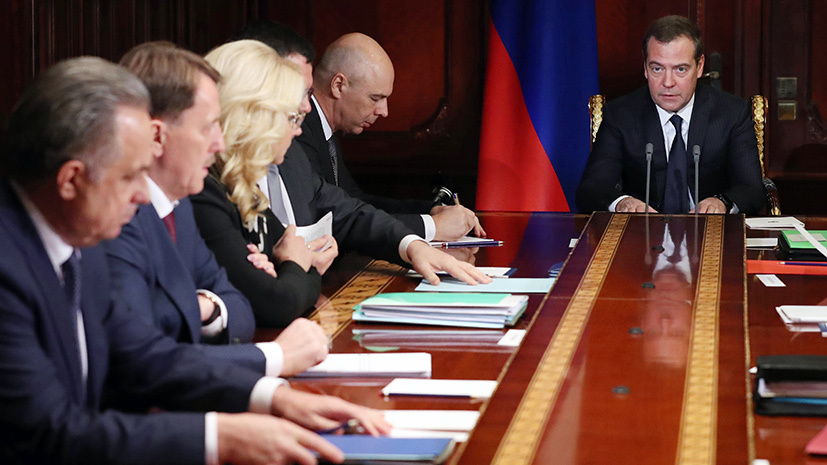On Monday, November 25, the Federation Council approved the draft law “On the federal budget for 2020 and for the planning period 2021 and 2022”. As follows from the document, the projected budget revenues were approved at the level of 20.379 trillion rubles in 2020, 21.247 trillion rubles in 2021 and 22.058 trillion rubles in 2022.
Budget expenses will also increase throughout the entire three-year period. As expected, in 2020 the state treasury will total 19.5 trillion rubles, in 2021 - 20.63 trillion rubles, and in 2022 reached 21.763 trillion rubles.
Thus, over the next three years, revenue from the state treasury will exceed costs. According to the bill, in 2020 the budget surplus will amount to 0.8% of GDP (876 billion rubles). In 2021, 0.5% of GDP (612 billion rubles), and in 2022, 0.2% of GDP (295 billion rubles).
“A budget surplus allows replenishing gold and foreign exchange reserves and reducing the country's national debt. Additional funds are appearing that can be allocated for the implementation of national projects or, for example, if necessary, directed to important areas such as indexing pensions or slowing down the growth of certain tax collections, ”Vyacheslav Abramov, director of BCS Broker sales office, explained in a conversation with RT.
Moreover, maintaining a budget surplus has a positive effect on the inflow of foreign investment, said Gennady Nikolaev, an expert at the Academy of Financial and Investment Management.
“Now the attention of foreign investors is attracted by Russian assets, which have a fairly high yield. At the same time, maintaining stability in the economy, as evidenced by a surplus budget and a low level of public debt, distinguishes Russia from developing countries, ”the source said.
It is noteworthy that in the approved draft budget, oil prices are set at $ 42.2 per barrel of Urals crude. Moreover, according to the forecast of the Ministry of Economic Development, from 2020 to 2021 the average level of quotations will remain much higher - in the range of $ 55-57 per barrel.
“The budget makes rather cautious forecasts for the cost of oil, with a margin. This is done so that even in the event of a sharp drop in oil prices to $ 42 per barrel, the budget will still remain in surplus. If oil will cost more, and while there is no reason to believe that it will fall to this level, then most likely the actual budget revenues will be higher, ”explained Vyacheslav Abramov.
Recall that under the budget rule, while the Russian Urals brand oil is trading above $ 42.2, the excess profits received from its sale are sent to the National Wealth Fund (NWF). According to the draft budget, in 2020 the volume of the NWF will increase from 8.2 trillion to 11.1 trillion, in 2021 - up to 13.7 trillion, and in 2022 - up to 16.2 trillion.
Social vector
As previously stated by the Prime Minister of Russia Dmitry Medvedev, the bulk of the expenses of the three-year budget is planned to be directed to the social sphere. Thus, healthcare financing will increase to a record level over the past 15 years - by more than 50%. At the same time, spending on education and improving demography will increase by 20%.
“When preparing the budget, we proceeded from the fact that it should be socially oriented - this is the most important direction. The money that goes for social support - for the development of education, healthcare, culture - is still the main spending part of the budget, ”the head of the Cabinet noted.
Social sector financing will take place as part of national projects. So, in 2020, 2 trillion rubles are planned to be allocated to fulfill the goals set by the president. In 2021, the amount will increase to 2.2 trillion, and in 2022 will amount to 2.7 trillion. As Vladimir Putin previously stated, the implementation of national projects should lead to an acceleration of Russia's GDP growth rates to 3% already in 2021.
“Effective spending of funds should lead to an increase in the income of Russians and an increase in consumer demand, which will invariably provoke an increase in industrial production and the volume of services rendered. In the end, we get the necessary GDP growth, ”said Finam Group analyst Alexei Korenev.
- Meeting of the head of the Cabinet of Ministers of the Russian Federation with Deputy Prime Ministers
- © Ekaterina Shtukina / RIA News
New expectations
During the meeting, the Federation Council also approved amendments to the federal budget for 2019. So, the volume of treasury expenses expected this year was increased from 18.3 trillion to 18.5 trillion rubles, and the income level was reduced from 20.2 trillion to 20 trillion rubles. As a result, the budget surplus will amount to about 1.5 trillion rubles (1.4% of GDP) instead of previously pledged 1.9 trillion rubles (1.7% of GDP).
In addition, the upper house of parliament also revised the forecast for oil prices in 2019 - from $ 63.4 to $ 62.2 per barrel. At the same time, the inflation rate was adjusted - from 4.3% to 3.8%, and the senators kept their assessment of economic growth this year at 1.3%.
However, according to the Ministry of Finance, the dynamics of the country's GDP may turn out to be better than forecast values. This was during a speech in the Federation Council, said First Deputy Prime Minister and Minister of Finance of Russia Anton Siluanov. According to him, in October the country's economy grew immediately by 2.2% in annual terms, and the final figure may exceed the budgeted 1.3%.
“National projects and the measures that we have taken to stimulate economic growth are starting to work. We are sure that the dynamics of economic growth this year will not be lower, and possibly higher than we predicted, ”said Siluanov.

